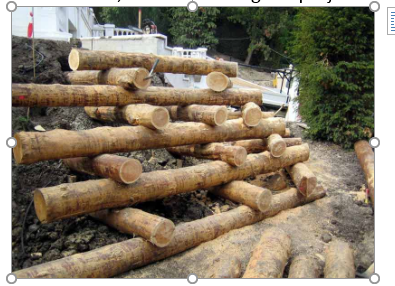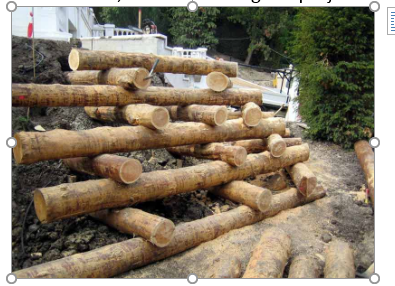
Restoration Methods for Small Waterbodies around Beijing
Details
Introduction
When it comes to watersheds hardly any part of the local ecosystem influences the ultimate water quality more than the small waterbodies (SWB) delivering the water to the larger reservoir. A small waterbody that is polluted and ecologically deteriorated will, no matter how good the rest of the watershed management, like measures to improve the water filtering capacity of forests, ultimately produce sub-standard water, increase the water velocity and even the danger of flooding, which in turn increases the costs for humans and damages the local ecosystem in the watershed. Therefore, the restoration of small waterbodies lies at the forefront of sustainable watershed management.
In most of the modern world, including China, most once natural river systems have been modified in the last few decades and with this water quality and aquatic ecosystems have continued to deteriorate. More and more countries are acknowledging this and have released their own frameworks (e.g. the European Water Framework Directive) to improve current conditions. Based on their success the Beijing Forestry Society (BFS) and the Beijing Park and Forest Department of International Cooperation (BFPIC) have worked together with experts from Germany in the project “Watershed Management of Forest Land in Beijing, Restoration of Small Water Bodies (SWBR)” to develop a holistic approach to improve SWBs in the Miyun watershed using close to nature solutions that will benefit both nature and humans.
The approach
Applying biological engineering solutions without compromising on flood protection requires a sound understanding of the interfaces in between hydraulic, hydro morphologic as well biotic issues.
In order to ecologically restore a SWBs functioning, several factors have to be considered: natural cycles that may change not only the amount of water the river carries, but also its shape and size; the way the waterbody is currently structured and what kind of vegetation is already there to work with; how can structural variety in the riverbed be re-established that includes areas for a temporary floodplain, the barriers compromising the river’s continuity; and SWBs social functions.
In Miyun a multitude of problems were identified during the pre-restoration assessment (see BMP on “Ecological Assessment and Classification Methods for the Status of a River”), amongst which were found such problems as 1.) dams interrupting lateral continuity, 2.) sections of the river being narrowed by fixed banks, 3.) the excavation of gravel and sand destroying the ecology of the river system, and 4.) garbage accumulation in the river.
1. Re-establishing Continuity
Water body continuity is often disrupted by technical infrastructures built for water retention or water abstraction. These infrastructures stop the migration of aquatic organisms, which is a necessity for the survival of many aquatic species. Biological engineering solutions aim at re-connecting disconnected sections of water bodies.
Definitions of what is “disconnected” differ from area to area, however during the project small waterbodies (flow <0.2m3/s) with a drop-off higher than 30cm and large waterbodies (flow >0.2m3/s) with a drop-off higher than 70cm were considered disrupted.
A popular method to fix connectivity issues are fish ladders, by-passes and ramps. It is important to plan in enough space for those as the steps can’t be too high for the fish to jump over (e.g. 25cm max every 1-2m). This ladders can replace the damn altogether or be built at the side of the damn. A more natural looking alternative is a cascading ramp made of rough stones.
2. Stabilizing Riverbanks and Preventing Erosion
When fixed banks and channels are removed to re-introduce the natural riverbed, the danger of erosion emerges. In this case there are several methods more or less intrusive methods to do so: the least intrusive method is planting riparian vegetation (grasses, shrubs, trees) in order to have their roots stabilize the river banks. Especially the planting of trees provides the additional benefit of controlling weeds through shading, reducing stream velocity during high flow events and cooling the stream temperature, which benefits the river organisms.
If the erosion is too severe, other more engineering focused methods include the less conspicuous fascines (willow branches packed in coconut fabric or steel mesh), where once installed the willows will start to grow roots and stabilize the soil, up to massive biological engineering solutions like Krainer Walls that can withstand extremely high abrasive tensions.
3. Enlarging Flooding Systems and Re-Establishing the Natural River Bed
Oftentimes the stream has been straightened and sometimes even channeled, resulting in a river that due to this restriction and its higher velocity during high flow events might discharge in undesirable areas like villages, where the water often is polluted severely. In order to “channel” the rivers flooding appropriately, natural flood plains should be re-established. This can be done via rebuilding natural river channels with winding ground view and more hydromorphological structures like gravel banks. An important aspect is to make sure the floodplain location is not also used by people for activities that could pollute the water in a flood event, like agriculture or pens for livestock. Pens could be relocated outside the flood corridor, while the agricultural fields could serve as grazing areas during the dry periods for livestock.
4. Garbage Removal
A seemingly simple issue is the disposal of garbage in the river bed. After a careful removal of all garbage in the SWB the greatest challenge lies in working with locals on establishing facilities where waste can be disposed of and establishing a culture that encourages the protection of the local river system. For the former, garbage collection areas and eco-toilets were built during the project, while the latter was achieved through awareness raising activities amongst the villagers. In areas with heavy pollution sewage treatment might be necessary.
Conclusion
Restoring SWBs is no easy tasks but are worth the effort as the river’s capacity to self-purify offers a sustainable method to increase the water quality in the area and re-establish native ecosystems. It should be a priority in any mega-city watershed.
Sources
Binder, W., et al. (2015). "Ecological restoration of small water courses, experiences from Germany and from projects in Beijing." International Soil and Water Conservation Research 3(2): 141-153.
Group, G. C. (2007). Annex 20: Small Water Ecology and Bioengineering; Feasibility Study Desertification Control Programme Northern China: "Watershed Management on Forest Land".
Group, G. C. (2015). Watershed Management on Forest Land Beijing, GFA Consulting Group.
Group, G. C. (2007). Annex 10: Wetlands; Feasibility Study Desertification Control Programme Northern China: "Watershed Management on Forest Land".
Li, H., et al. (2015). Sustainable Watershed Management Practices in The Miyun Reservoir Watershed of Beijing, China, Beijing Forestry Society.

